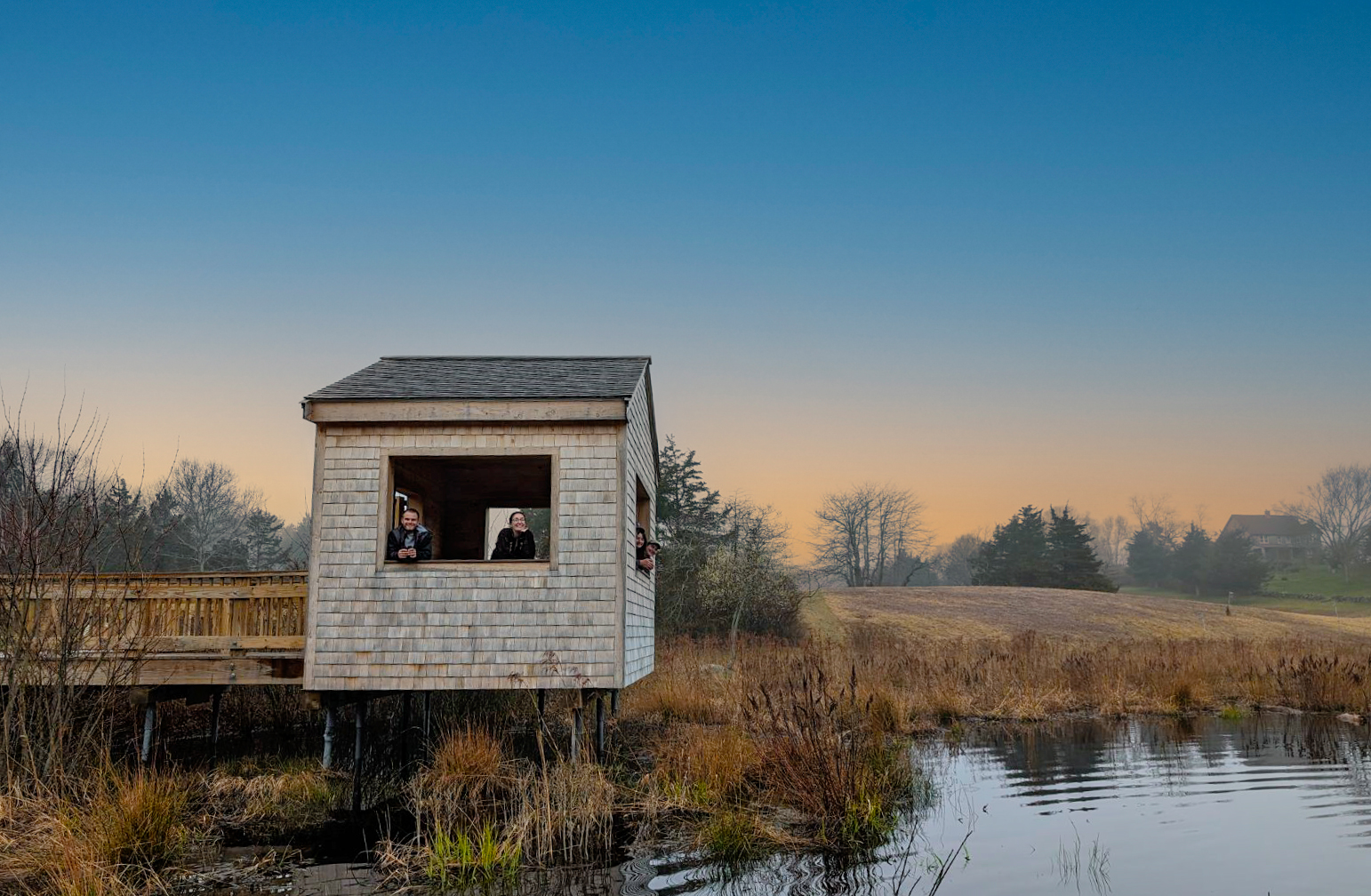The 2015 spring banding season came to a close last month, recording an optimistic number of birds after a long, harsh winter. As always, the banders followed a daily routine that is steeped in tradition—running 50 mists nets from dawn to dusk to ensure a continuation of the lab’s 50 year dataset, one that provides an unparalleled comparison of range expansions and contractions, yearly variation of migration and long-term population change.
The lab welcomed 520 visitors from organized groups including college, high school, middle school, and elementary school classes. Over the course of two particularly busy weeks, the lab hosted the entire 8th grade class of Sandwich Middle School, which has participated in our Climate Lab project.
“Our numbers this season were somewhat above average, compared with the last ten years, which is pleasantly surprising considering the winter we had,” said Landbird Banding Director Trevor Lloyd-Evans. “However, some of our resident birds, like Carolina Wren, were noticeably absent. This was probably due to the harsh weather they had to endure in January and February.”
Want to learn more? Let’s dive deeper into this year’s dataset.
Bird’s Eye View
New Bandings: 1,229
Repeat Captures: 660
Total Handled (number and species): 1,889 of 74 species
In comparison, the average number of birds we handled in spring over the last ten years is: 1,790 of 72 species
All Hands on Deck
Our busiest day was May 5th. That day alone, the lab handled 164 birds. Newly banded birds totaled 141, with 87 of the birds being Gray Catbirds.
Unusual Capture: Cerulean Warbler
 On May 15th, the lab captured a Cerulean Warbler. This was the fifth time in Manomet’s history that we handled this rare species, and the first time we had banded one in the spring. The last time the lab saw a Cerulean Warbler was in 1980.
On May 15th, the lab captured a Cerulean Warbler. This was the fifth time in Manomet’s history that we handled this rare species, and the first time we had banded one in the spring. The last time the lab saw a Cerulean Warbler was in 1980.
Cerulean is a globally rare bird that is on the 2014 State of the Birds Watch List. This means that the species is in danger of extinction in the absence of significant conservation and is under consideration for listing under the Endangered Species Act.
The bird breeds in mature Appalachian forests, which is a diminishing habitat. It winters in tropical forests in the Andes at an elevation between 600 and 1300 meters .
Most Commonly Seen birds:
Although the lab is lucky enough to see extremely rare birds from time-to-time, they get very familiar with a couple of species. The list below shows the most abundant new bandings recorded this spring.
Gray Catbird: 367
White-throated Sparrow: 110
Magnolia Warbler: 102
Common Grackle: 48
Common Yellowthroat : 45
Oldest Birds:
 The lab gets even more familiar with a couple of individual birds. The lab recaptures some birds year-after-year as they return to the same site to breed or stay all year long as residents. Here are the oldest birds recaptured at the lab this spring.
The lab gets even more familiar with a couple of individual birds. The lab recaptures some birds year-after-year as they return to the same site to breed or stay all year long as residents. Here are the oldest birds recaptured at the lab this spring.
Northern Cardinal: 8 years old
Common Yellowthroat: 8 years old
Two Gray Catbirds: 7 years old
Brown Thrasher: 6 years old
Highs and Lows:
 Through our consistent dataset, we are able to compare range expansions and contractions from year-to-year. This year, eight species recorded the highest number of individual birds handled over the last ten years. Most notably, the lab banded 12 Downy Woodpeckers and 34 Eastern Towhees this season.
Through our consistent dataset, we are able to compare range expansions and contractions from year-to-year. This year, eight species recorded the highest number of individual birds handled over the last ten years. Most notably, the lab banded 12 Downy Woodpeckers and 34 Eastern Towhees this season.
However, six species, including Carolina Wren and flycatchers, recorded significantly lower numbers compared with the last ten years.
“Since the 1990s, landbird populations have stopped dramatically declining and have more or less leveled out. This is good news, but when you look deeper at the data on a species level, there are still some great concerns and opportunities for conservation,” said Lloyd-Evans.
Our banders, Mattie VandenBoom, Grace Alloy-Relihan, Megan Lee, Sophie Zyla, and Evan Dalton, worked tirelessly this season to keep the lab running smoothly and open to interested guests. The lab is not the same without them!
-Liza LePage





 Back to all
Back to all